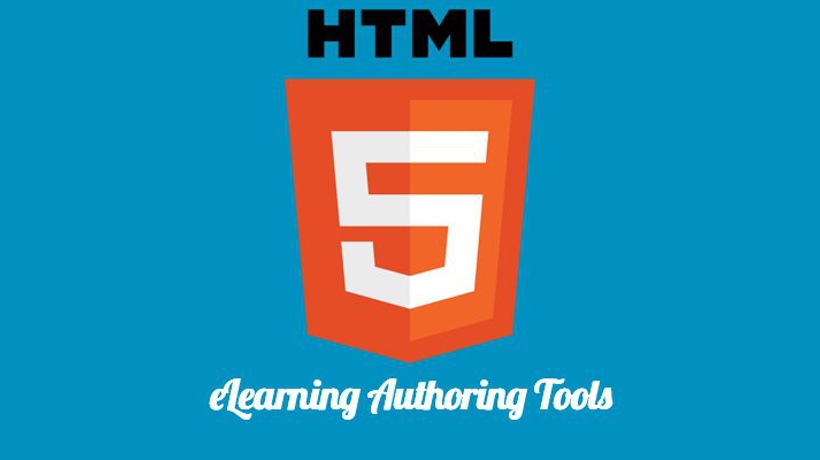Can eLearning Design Be Easy? It Can When You Use These 10 Authoring Tools!
In the digital age, every single aspect of our lives is being transferred in the online environment. Education, in particular, has been revolutionized by the ability to share and gain knowledge without being dependent upon the traditional classroom setting. A great number of colleges and universities share their course materials online, and some of them enable students to substitute part of their traditional courses with online options.
Naturally, some students opt for complete online degree programs. Others enroll in online courses not because they want a certificate or degree, but simply because they want to learn.
The online learning industry revealed tons of opportunities for teachers and tutors. Educators can easily author eLearning tools for any course or subject. Are you interested in revealing a new aspect of your profession? Here is our list with 10 great authoring tools.
- Adobe Presenter 11.
This is an eLearning development tool that enables you to turn your PowerPoint presentations into materials that you’ll present to your online community of learners. That doesn’t sound as fancy as some of the other tools on this list, but it’s also very convenient because you won’t need any special training to master the features of Adobe Presenter 11. If you’re a beginner in online course authoring, then you’ll appreciate the fact that you’ll easily create and publish attention-grabbing presentations thanks to this tool. - The Xerte Project.
The Xerte Project, provided by the University of Nottingham, has a goal to support educators in their goal to provide high-quality education to students from all over the world. It’s easy to use for non-technical content authors, and it enables you to create interactive, media-rich content that will be highly responsive. The Xerte Community website offers great support for the users, so you’ll find answers to your questions and you’ll understand how to use the features of Xerte toolkits. - Quick Lessons.
If you’re serious about developing awesome eLearning courses, then you can collaborate with an entire team that will cover different tasks and aspects of the project. Of course, you’ll need a platform that will support such collaboration, and Quick Lessons is a good choice for that. It’s accessible online, so you won’t need to download and install software to your computer. You don’t need programming or design skills to start using the intuitive features, and you’ll have access to a great library of animated templates that will make the course creation as simple as possible. - Composica.
Composica is another collaborative platform that enables you to develop highly-interactive eLearning courses. The concept of social authoring keeps the authors connected through a project blog, RSS feed, comments, and individual and group chats. You can categorize the team in three levels: Developers (they have access to everything), contributors (they can access certain features to make contributions), and reviewers (they can edit the project to a certain extent, but they cannot add new content and features to the course). You can use Composica to deliver courses on any device, so your learners can access them via tablet, desktop, and mobile. - Udutu.
Udutu is a free authoring tool that enables you to create training materials by using customizable theme templates. The pre-built game-like scenario templates will add to the appeal of your online courses. The WYSIWYG format makes content creation simple. Udutu is great for both academic and corporate course developers. - Lesson Writer.
This is a course authoring tool for teachers, who want to add more excitement into the traditional classroom setting through eLearning materials. Lesson Writer enables them to create comprehensive literacy lesson plans from any content. They can also use the platform to organize classes, curriculum, and reports, as well as to collaborate with their colleagues with the purpose of creating better lessons. If you’re a teacher and you already have a lesson plan, it doesn’t mean you can’t get creative with it. With Lesson Writer, you’ll discover the full potential of the curriculum. - iSpring Suite.
iSpring Suite is an authoring toolkit for PowerPoint, so you won’t need any training to get started. You can create lessons that will adapt themselves to the screen size of the viewer, so your learners will be able to access them from any device. The suit supports interactive assessments, screen recordings, video lectures, conversation simulations, and more. You’ll have access to a character library that you can use for creating comprehensive training materials. - Easygenerator.
Quizzes are an important part of eLearning materials, since they enable the learners to evaluate their achievements. With Easygenerator you can create appealing courses that include quizzes with different types of questions. The free version enables you to share up to 10 courses with up to 10 learners through the Easygenerator cloud. If you like what you see, you can purchase one of the plans to create more courses, share them with an unlimited number of learners, and access new question types and features. - authorPOINT.
With authorPOINT you can convert your PowerPoint files to SCORM compliant content. This is one of the best tools to use for developing multimedia presentations that you can share across platforms. You can add pre-recorded video and audio to your presentations. When you’re done creating the eLearning content, you can publish it on the WizIQ platform, which looks like a virtual classroom that supports chat, content sharing, communication via audio and video, and session recording features. - GoAnimate.
GoAnimate is a great tool to use for creating professional animated videos. Instead of paying live actors and creating the right setting with professional lighting, you can create animated characters who will share the knowledge with your learners. It does have a learning curve, but you’ll get used to the features and you’ll soon be able to create animations that will add a new dimension to your online teaching methods.
Are you ready to dive into the world of eLearning? It doesn’t matter whether you’re experienced in developing online courses or you’re about to make your first attempt; the tools listed above are great for everyone’s needs. Do you have any suggestions for other authoring tools that course authors can use for their projects? Share your recommendations in the comments below!








